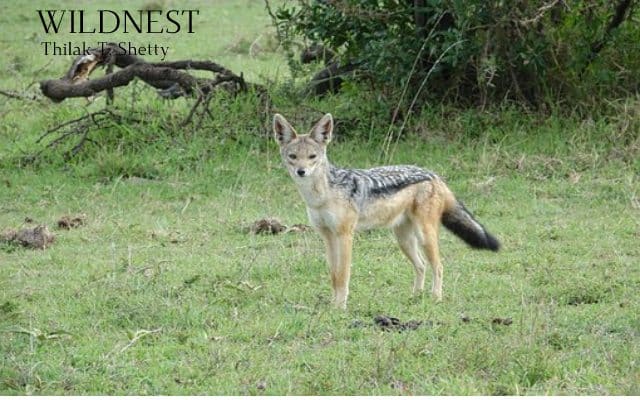Jackals are medium-sized canids native to Africa and Eurasia. Four species are usually recognized. The word jackal comes from the French Chachal, which emerged in C. 1600. Its origin also connects with the cakal in the Turkish language and the shaghal of Persian. In Sanskrit, it’s Sragala, which means the howler. Jackals are a prominent part of the Canidae family.
While they do not form a monophyletic clade, all jackals are opportunistic omnivores, predators of small to medium-sized animals and proficient scavengers.
jackals are not very massive animals. Rather, it can be described as a small to medium-sized creature. Jackals grow to a length of about 85–95 cm (34–37 inches), including the 30–35 cm (12–14-inch) tail, and weigh about 7–11 kg (15–24 pounds). Their long legs and curved canine teeth are adapted for hunting small mammals, birds, and reptiles, and their large feet and fused leg bones give them a physique well-suited for long-distance running, capable of maintaining speeds of 16 km/h for extended periods of time. Jackals are crepuscular, most active at dawn and dusk. This animal is pretty adaptable.
Jackals have a monogamous relationship in which the pairs are already defined. This means that throughout life, jackals keep only one partner and are pretty loyal to each other. Together with his partner, a male jackal lives within a territory and defends it fearlessly when needed. It also makes sure no random male jackal gets to intrude on their privacy. The start of January initiates the breeding season in jackals, and it extends all the way till February. This mating season is around a month long, and after that, there is a gestation period of sixty-three days. Then, the mother gives birth to two to four offspring in a single go. The pups are small, adorable kiddos of these jackals who are weaned for as long as eight weeks. After that, they start growing their reproductive parts and become regular members of the jackal family.
Jackals are one of those mammal carnivores who help in maintaining biodiversity. Jackals inhabit the open country. They are nocturnal animals that usually conceal themselves by day in brush or thickets and sally forth at dusk to hunt. They live alone, in pairs, or in packs and feed on whatever small animals, plant material, or carrion is available. They follow lions and other large cats to finish a carcass when the larger animal has eaten its fill. When hunting in packs, they can bring down prey as large as an antelope or sheep. When compared to the other members of the canine family, the bite of a jackal is not very strong. Actually, it’s much weaker than the mountain lion. The bite force is around 776 pounds per square inch.
Like other members of the genus, jackals sing in the evening; their cry is considered more dismaying to human ears than that of the hyena. They have an offensive odour caused by the secretion of a gland at the base of the tail. The young are born in burrows, the litters containing two to seven pups; gestation lasts 57 to 70 days. Like wolves and coyotes, jackals interbreed with domestic dogs. They are loyal to their partners and mate only with them for a lifetime.
Like foxes and coyotes, jackals are often depicted as clever sorcerers in the myths and legends of their regions.
They are mentioned roughly 14 times in the Bible. It is frequently used as a literary device to illustrate desolation, loneliness, and abandonment, with reference to its habit of living in the ruins of former cities and other areas abandoned by humans.
It is called “wild dog” in several translations of the Bible. In the King James Bible, Isaiah 13:21 refers to ‘doleful creatures’, which some commentators suggest are either jackals or hyenas.
In the Indian Panchatantra stories, the jackal is mentioned as wily and wise.
In Bengali tantrik tradition, they represent the goddess, Kali. It is said she appears as a jackal when meat is offered to her.
The Serer religion and creation myth posits jackals were among the first animals created by Roog, the supreme deity of the Serer people.
As this animal is closely related to the dog, some studies show that it is a major contributor to the spread of rabies.

















